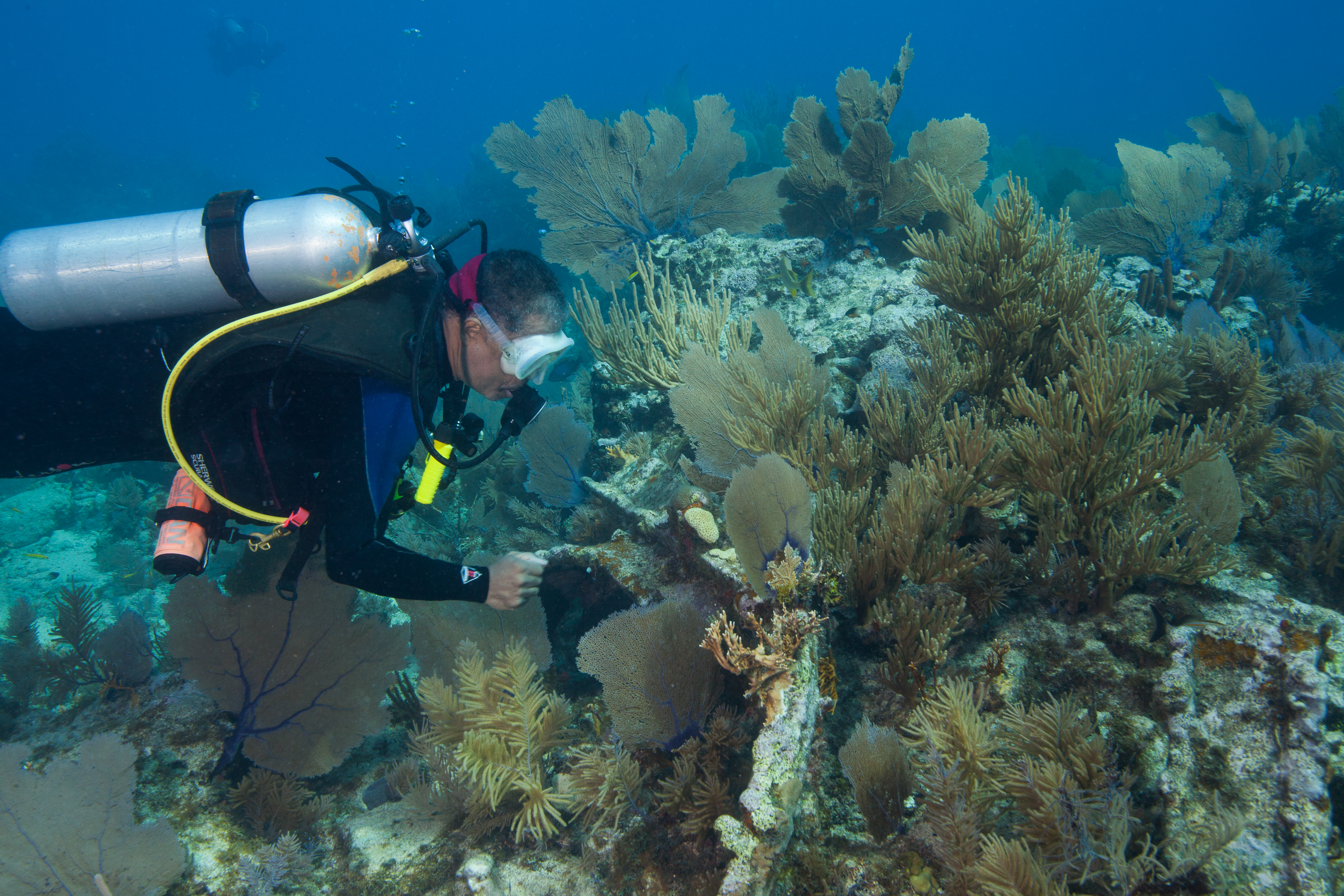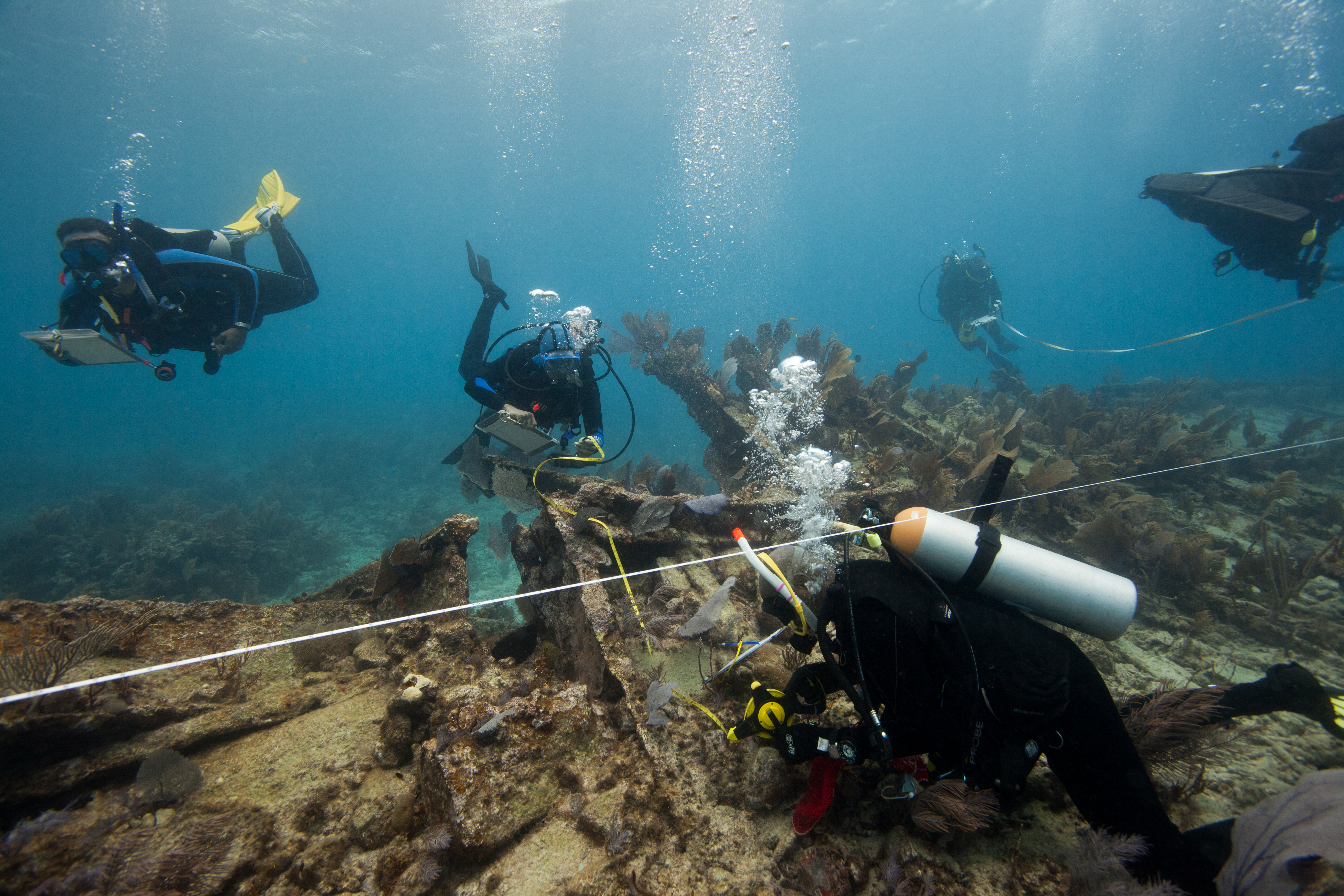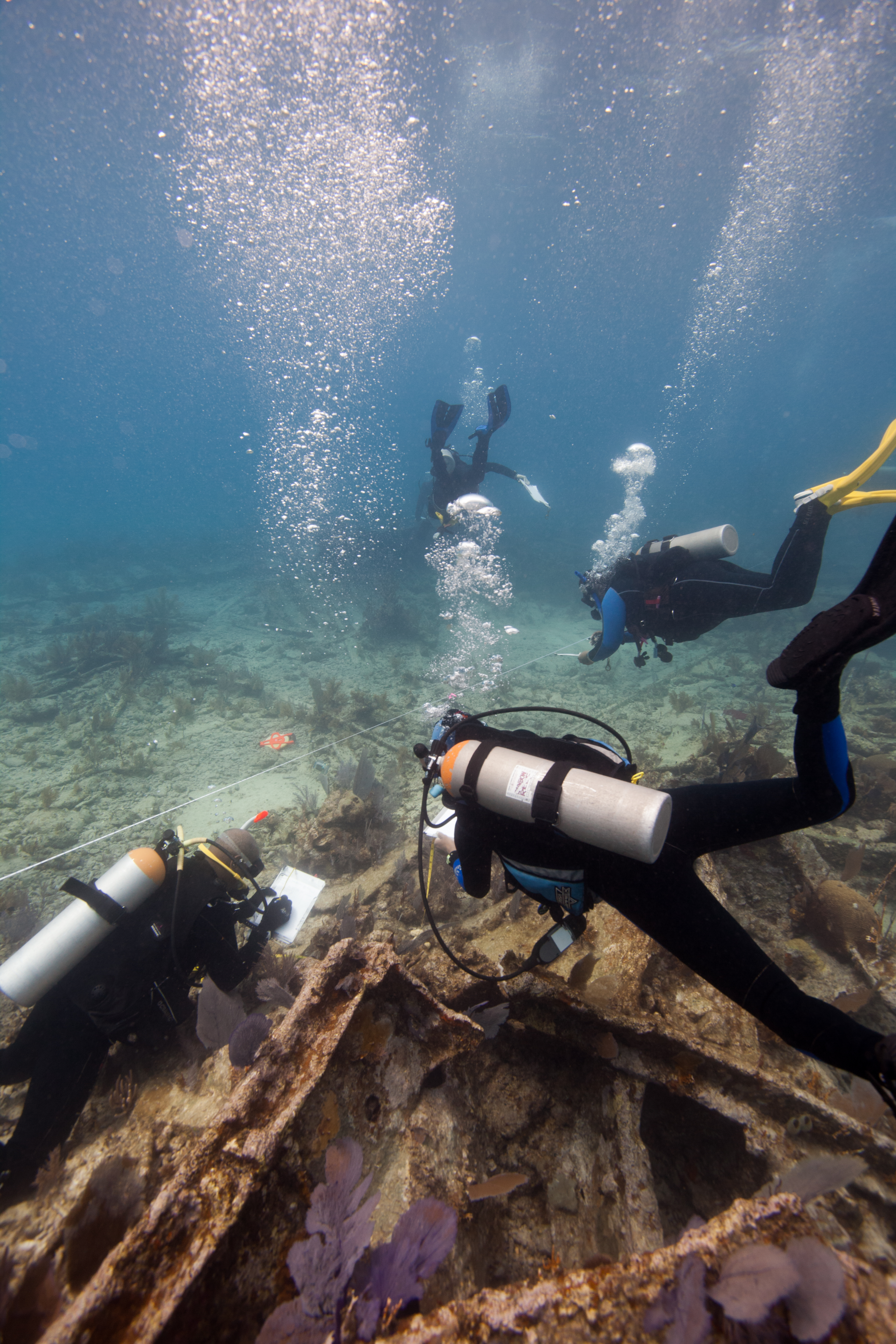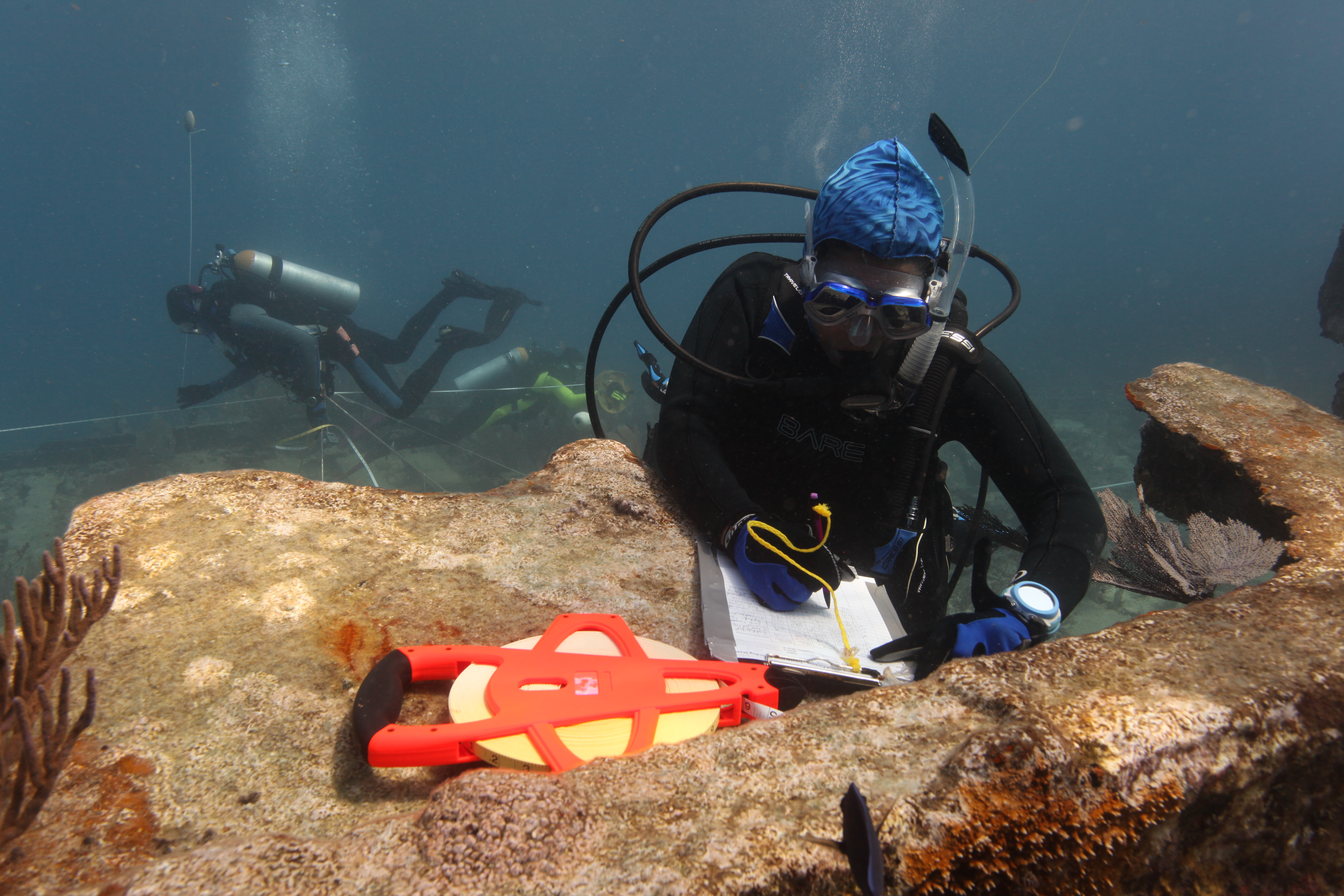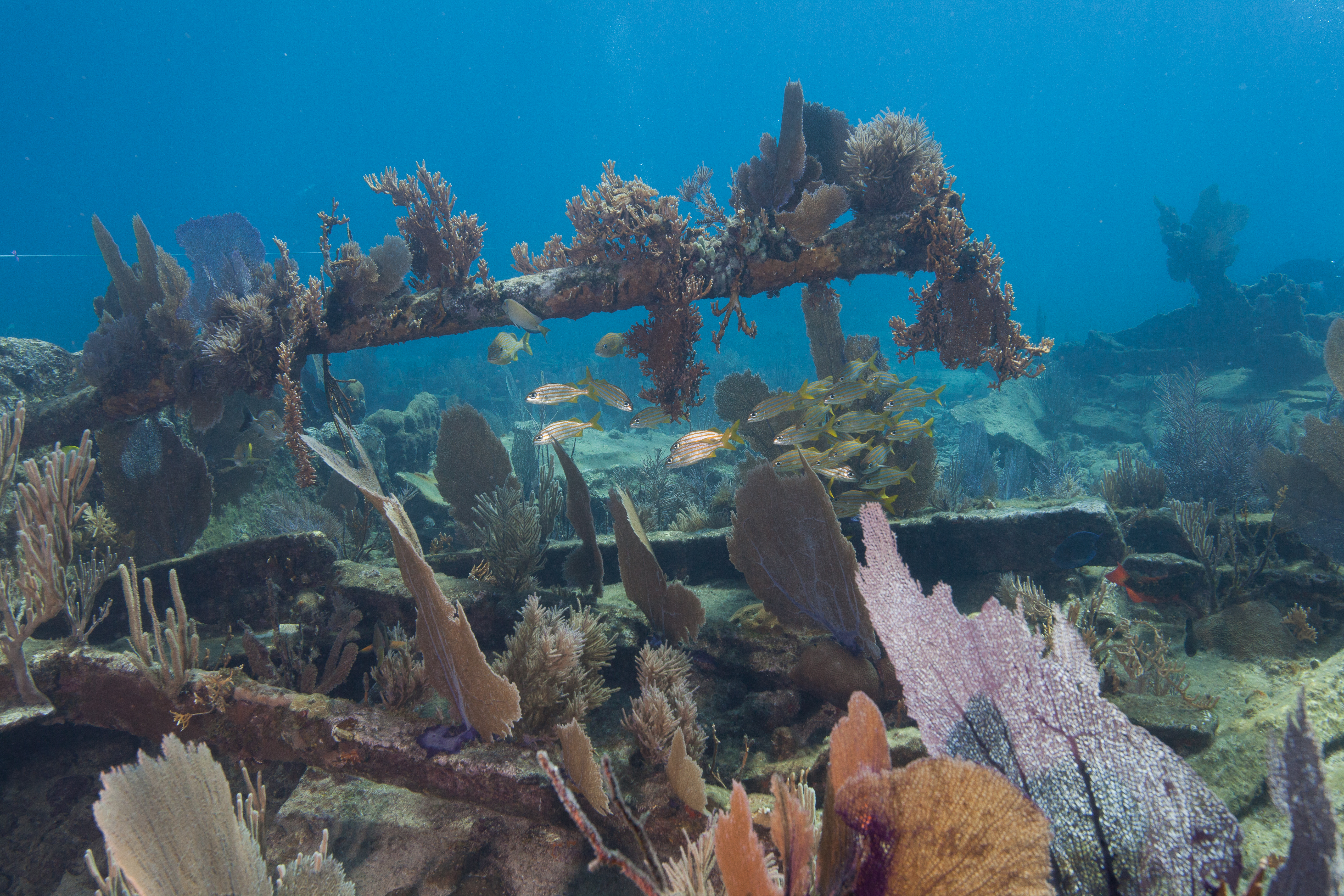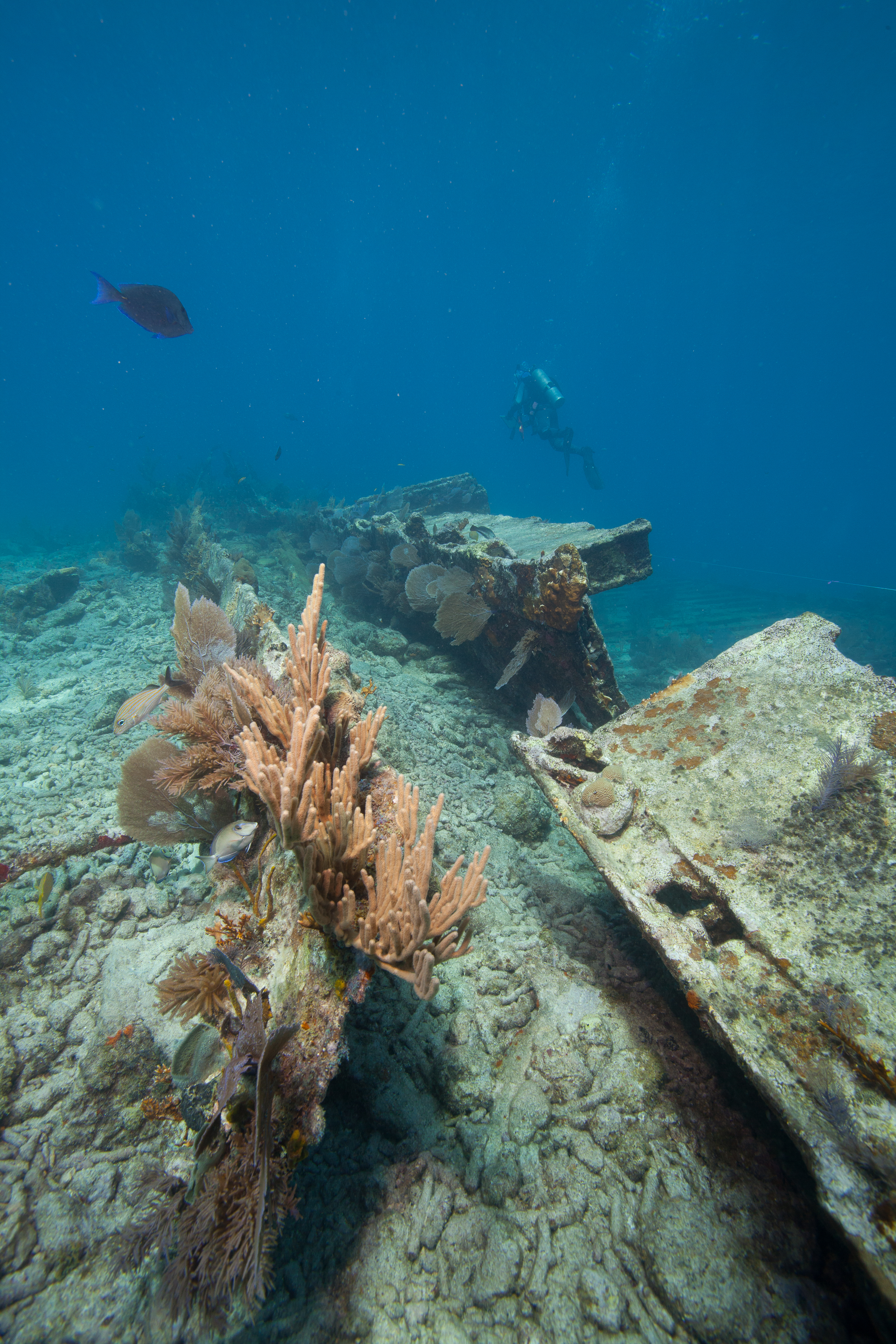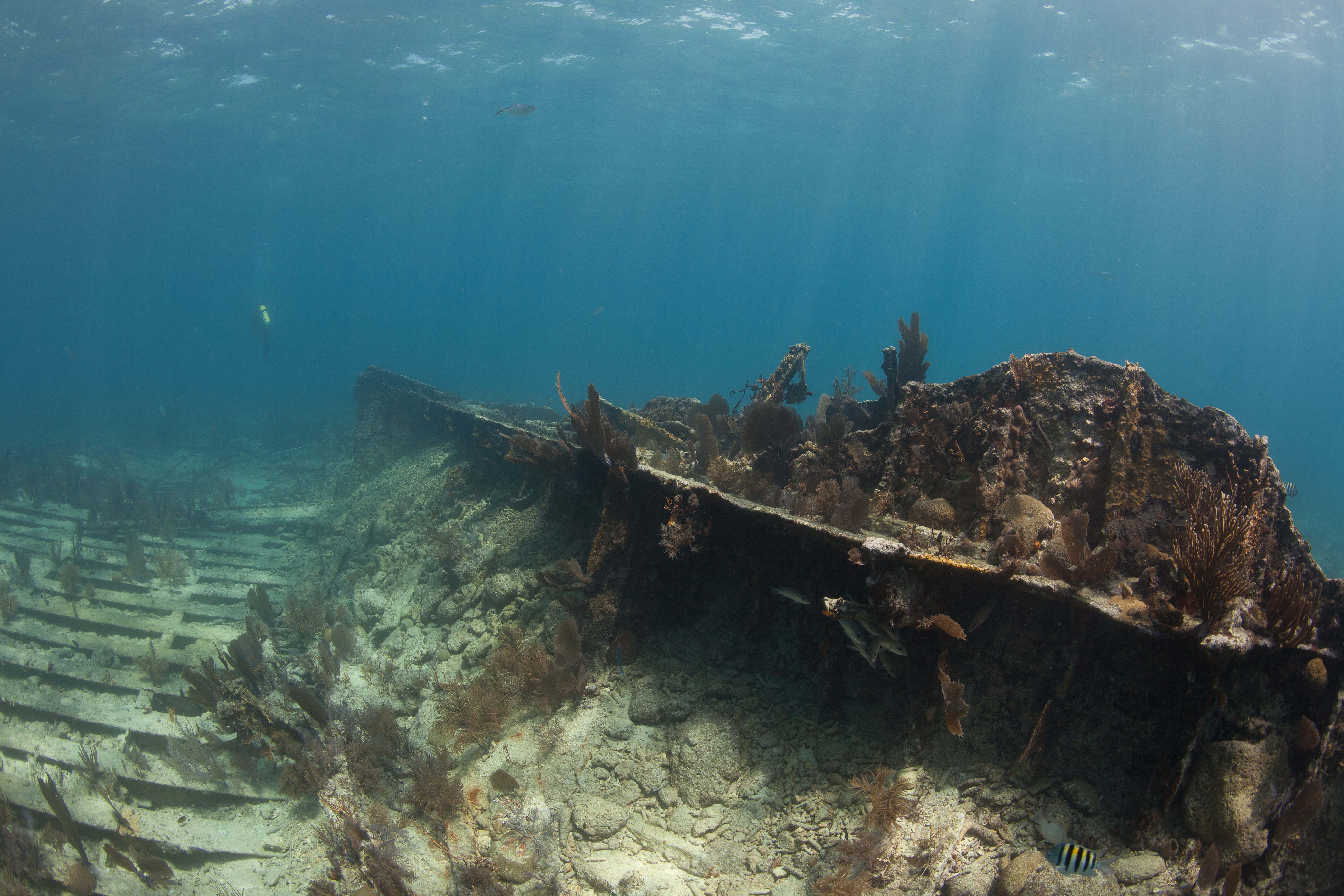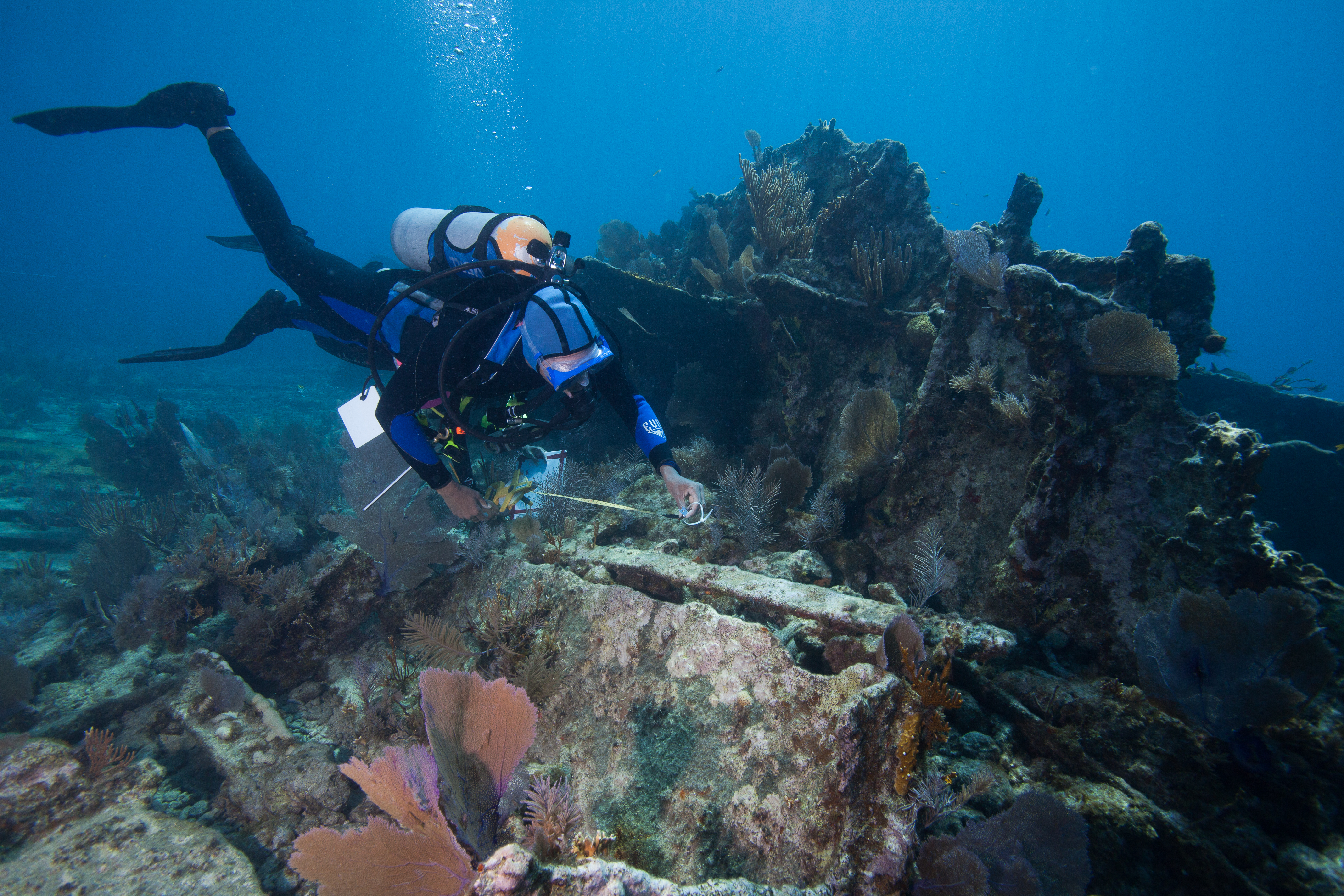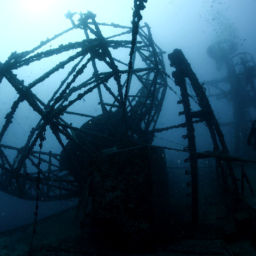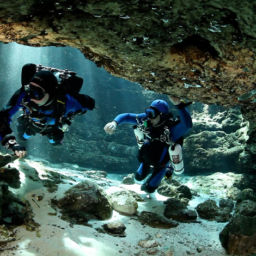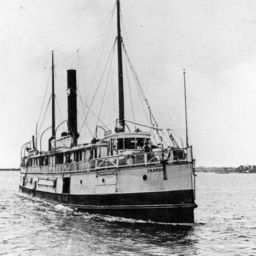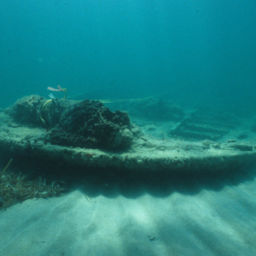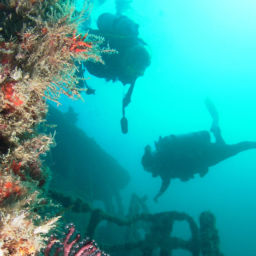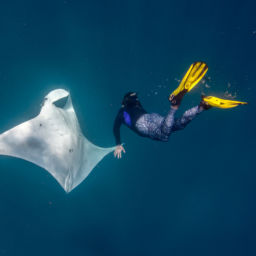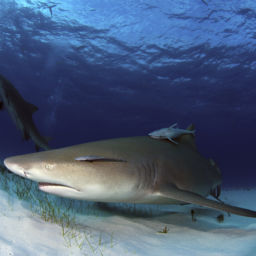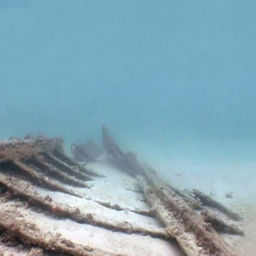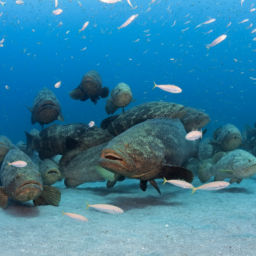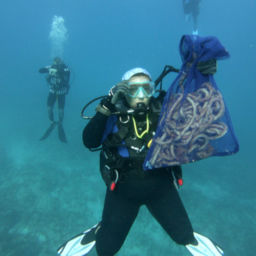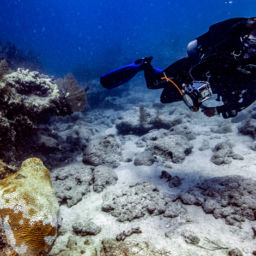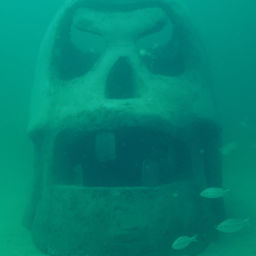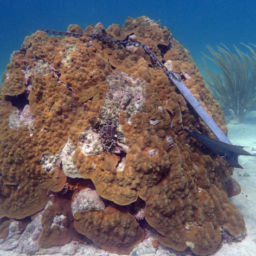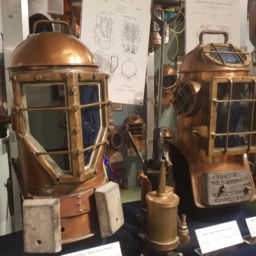National marine sanctuaries protect some of the most spectacular ocean and Great Lakes resources in the United States, including historic shipwrecks. These NOAA marine sanctuary shipwrecks serve as living museums: they are places to explore, discover, and appreciate our country’s maritime cultural heritage. And many of them, like Florida Keys National Marine Sanctuary’s Hannah M. Bell, are easily accessible to divers and snorkelers.
Florida Keys National Marine Sanctuary
Florida Keys National Marine Sanctuary protects 2,900 square nautical miles of critical marine habitat, including coral reef, hard bottom, seagrass meadows, mangrove communities, and sand flats. Every year, thousands of visitors come to the Keys to fish and dive.
NOAA Marine Sanctuary Shipwrecks: the Hannah M. Bell
Some of the sanctuary’s most popular dive spots are shipwrecks. The Keys’ shallow coral reefs have claimed many ships over the centuries, but today some of these sunken vessels provide a home for a myriad array of colorful marine life. One of the best sites in the sanctuary is the wreck of the Hannah M. Bell.
Hannah M. Bell was a 315-foot British steel-hulled steamship, built in 1893 by Ropner and Son in England, and named for the woman who christened it. Prior to its demise, the ship made frequent transatlantic trips between European ports, the U.S. East and Gulf Coasts, and Caribbean and South American ports. It transported a variety of bulk cargos including cotton, sugar and coal.
On April 4, 1911, Hannah M. Bell grounded during a storm on Elbow Reef, about six miles offshore of Key Largo, Florida. With the ship’s engine room flooded and holds filled with water, salvagers dispatched the wrecking tug Roosevelt to the scene. Before the tug arrived, however, the captain abandoned the vessel, as heavy weather tore the ship apart. Fortunately, no lives were lost.
Today, the wreck rests in 10 to 30 feet (3 to 10 m) of water within sanctuary waters. For years, it was known only as “Mike’s Wreck,” after a local dive-shop employee. In 2012, researchers from NOAA’s Office of National Marine Sanctuaries and volunteers from the non-profit Diving with a Purpose identified the wreck.Diving the Hannah M. Bell
Hannah M. Bell is close to the far-more-famous City of Washington shipwreck. However, Hannah M. Bell is a much more impressive sight. While storms and salvage have taken their toll on the wreck, portions of its hull rise from the seafloor as much as 15 feet (4.5 m). Divers can also see large elkhorn corals while swimming around the adjacent reef.
A mooring buoy near the wreck makes it easy to dive on Hannah M. Bell without damaging it or the surrounding reef. The Keys have used mooring buoys since 1981 as an alternative to anchoring, which can break and damage the coral reef. Beyond those near Hannah M. Bell, there are nearly 500 mooring buoys available for free throughout the sanctuary on a first-come, first-served basis. Anchoring on living coral within the sanctuary in waters less than 40 feet (12 m) and when the bottom is visible is prohibited. If no mooring buoy is available and you are outside a no-anchor zone, you may anchor in sand.
By Elizabeth Weinberg and Vernon Smith, NOAA Office of National Marine Sanctuaries
Visit the NOAA Office of National Marine Sanctuaries online to learn about diving and maritime heritage in your national marine sanctuaries.


